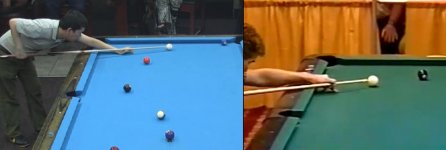We appreciate your cold, hard facts Lou. Your input of cold, hard facts is always a breath of fresh air and sun to our otherwise warm, soft, rhetoric.
We're also glad your science and physics is holding up in your league play, tournaments and money matches. Be sure to keep us updated kindly. :wave3:
I appreciate you being here with your theories.
Lou Figueroa
